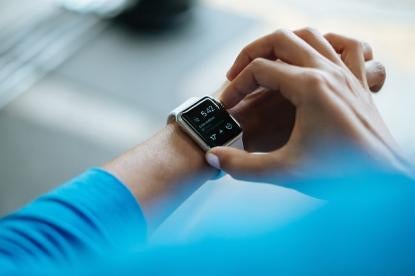At long last, the Food and Drug Administration issued its Nonbinding Recommendations and Guidance regarding "General Wellness: Policy for Low Risk Devices," announcing it will not regulate "low-risk general wellness products." Low risk products, in turn, are defined as products that meet the following two factors: (1) are intended for only general wellness use, as defined in this guidance, and (2) present a low risk to the safety of users and other persons. Click here for the full details.
Although questions remain, particularly as to the scope and parameters of what constitutes a low risk device, the Recommendations are a welcomed addition to the dialogue and offer a reasonable, first step of balancing the safety concerns for individuals with the importance of encouraging technological innovation in the exciting and emerging field of Health Tech.
The FDA defines "general wellness" as a device designed for the purpose of a "general state of health or a healthy activity." We stop to note the opaque and circular nature of the definition. But, the FDA then provides some degree of clarity through examples. The first category, of products are devices that have the singular, specific purpose of self-help or quantified-self monitoring. The FDA provides the examples of devices and apps that help individuals with day-to-day weight management, fitness, mental acuity, stress management, self-esteem, sleep and sexual function.
The second category of low risk devices, however, is comprised of a more ambitious, albeit more ambiguous, group of products. The FDA defines the second category as products that that seek to improve "functions associated with a general state of health while making reference to diseases or conditions." This category appears to exclude products whose primary purpose is for general health but that – because of the device's effectiveness and/or medical literature or recommendations – also have a secondary function or benefit that reduces the risk or mitigates chronic diseases or conditions. It references the most common, chronic diseases and conditions, such as heart disease, high blood pressure, and type 2 diabetes, but does not suggest these conditions are an exhaustive list. Excluded from the second category of low risk devices are products that are invasive, implanted or involve technology that could pose a safety risk, such as lasers or radiation.
The FDA's delineation of the types of products that fall within, or outside of, category two is explained by illustrations. Devices that are not low-risk are, for example, products that provide cosmetic modifications (e.g., tanning or wrinkle removal), sexual function, neuro-electrical stimulation, and athletic performance based upon internal testing.
Likewise, technology devices and apps that seek to treat or diagnose medical conditions, even if they otherwise might fall within either of the categories, are not considered low risk. The examples that the FDA cites for this exclusion are products that treat or diagnose obesity, an eating or anxiety disorder, autism, restorative therapy, or the body's functionality following an injury, disease or other medical condition.




 i
i


